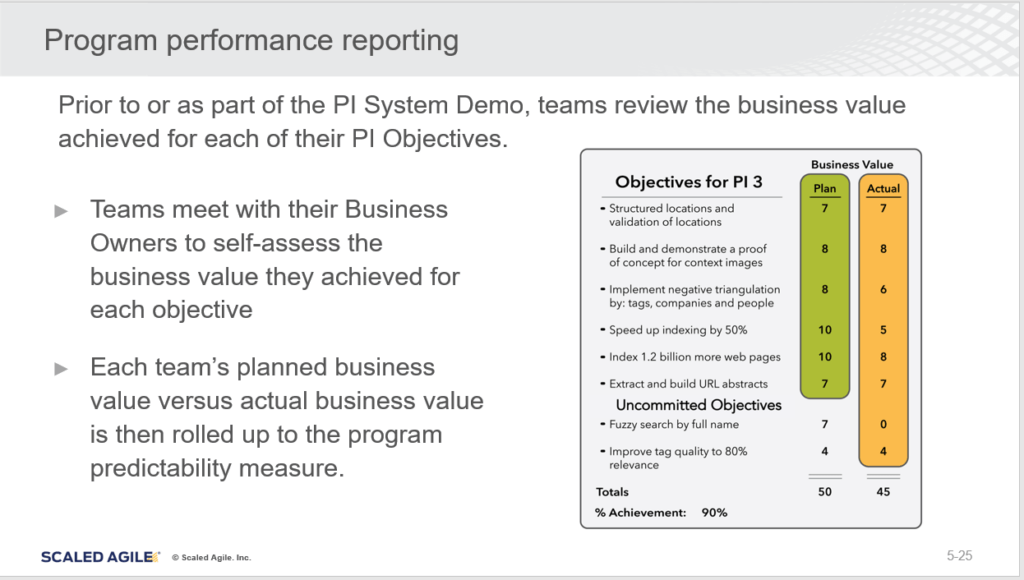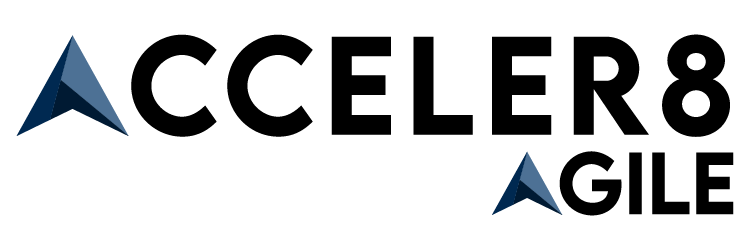PI Objectives play a critical role in SAFe by enabling organizations to align and coordinate their teams towards a shared set of goals during a Program Increment. Creating a set of well-defined and measurable PI Objectives is essential to drive success and ensure that all teams involved are working towards the same outcomes. In the following blog post, we will delve deeper into PI Objectives, discussing their importance and sharing tips for writing more effective objectives.
What are PI Objectives?
PI Objectives are clear and concise business summaries of what each team and the overall Agile Release Train (ART) intends to accomplish during a Program Increment, which typically spans 10-12 weeks. These objectives are primarily created from the bottom-up during the team planning process that occurs during PI Planning. PI Objectives must be SMART (Specific, Measurable, Achievable, Relevant, and Time-bound) and should reflect the team’s high-priority outcomes that align with the business owners and other stakeholders’ expectations. By using PI Objectives, teams remain focused on their most important work and ensure that everyone is aligned with the same objectives. They also assist business owners in understanding and validating the work being done by the teams and providing feedback and support as required.
Some Challenges with PI Objectives:
During my experience of participating in nearly 50+ PI Plannings over the past 6-7 years, I have noticed several challenges that Agile Release Trains and Agile Teams encounter concerning PI Objectives. Here are a few examples of those challenges:
- Teams often become overly focused on planning the iterations without creating any objectives
- Objectives are defined prior to the PI Planning event
- Some teams often confuse PI Objectives with features
- PI objectives may be ineffective despite the effort put into creating them
- Objectives are often not created for enablers, such as infrastructure or architecture improvements
- Business owners often struggle with assigning business value to PI Objectives
In the following section, we’ll delve deeper into each of these challenges.
Why we need PI Objectives?
PI Objectives play a critical role in promoting alignment and coordination among teams, stakeholders, and business owners involved in PI Planning. By ensuring that everyone works together towards the same goals and has a clear understanding of how their efforts contribute to the program’s success, PI Objectives facilitate feedback loops, enable decentralized decision-making, and promote shared commitments to achieve objectives. They provide a framework for measuring progress and enable teams to adapt to changing circumstances while remaining aligned with the overall program goals.
- Team PI Objectives provides immediate feedback to business leaders that teams understand the desired outcomes
- Promoting decentralized decision-making, the business value of team PI Objectives allows teams to adjust planned work if necessary
- Committing to PI Objectives instead of specific features or stories enhances agility by enabling predictability without restricting implementation options
- Teams and Product Owners can modify planned work based on discovery and customer input while still achieving business value
- The PI Objectives promote ownership and accountability among team members, as they are the ones who commit to them, rather than the business owners
When we already have Features, why do we need PI Objectives?
It’s important to understand the relationship between PI Objectives and Features. Features are not formal requirements but ideas or proposals for further development. They represent requests for additional work, not agreed-upon goals. When a team commits to working on a feature or a set of features, they establish a connection with the PI Objective by specifying how they will test, validate, or reject the anticipated benefits of the feature. By defining specific and measurable outcomes that their work will generate, the team can align their efforts with the overall PI Objective. This helps ensure that the team’s work is focused on achieving the desired outcomes and supports the PI Objective’s goals.
How to write better PI Objectives?
Here are some tips for writing smart-er PI Objectives:
- Focus on Outcomes: Focus alignment on the outcomes rather than process
- Describe Value and Impact: Of the PI Objective in a clear and concise manner
- Avoid Jargon and Technical Terms: That Business Owners and Customers may not understand
- Avoid using Features or Stories as PI Objectives: As they are subject to change
- Keeping PI Objectives to a Manageable Minimum: Allowing for better comprehension with Business Owners and stakeholders where lists exceeding 5-8 items per team are often not read in their entirety, and serve as a key for providing clear evidence of progress both within and beyond the train
- Writing PI Objectives: It’s important to keep in mind the SMART criteria
Specific: Clearly state the action and intended outcome in a concise and explicit manner. For example: “Deliver, Provide, Improve, Learn, Decide, Support, Ensure, Prevent, Demonstrate, and Investigate”.
Measurable: To evaluate progress effectively, it is essential to set quantitative and descriptive objectives that use Yes/No responses or ranges. The targets set must be realistically attainable and can be measured through descriptive, binary, or quantitative methods. For example: if the objective is to improve mobile banking login time, setting a specific target (e.g., reducing the response time from 10 to 5 seconds) will allow for binary (yes/no) evaluation. It is recommended to “avoid using weasel words such as Try, Better, Easier, Efficient, Faster, Quicker, and Simpler”.
Achievable: It’s important to make sure Objectives are realistic and within the team’s control and influence. This means acknowledging factors that cannot be controlled and avoiding assumptions about best-case scenarios.
Realistic: Recognize factors that are beyond our control and not make assumptions about everything going according to plan.
Time-bound: Objectives should be achievable within the PI timeline. Some objectives may require tighter time constraints. For example: “Deliver AWS SIT environment by the end of iteration 2 for Team Alpha to enable integration testing for Checkout API”.
Why Uncommitted Objectives?
There seems to be a lot of misunderstanding regarding Uncommitted PI Objectives. To clarify, Uncommitted objectives represent the inherent risk that a particular objective might not be achievable and agile teams are not obligated to commit to delivering them. Objectives move to uncommitted objectives when:
• Teams have low confidence in meeting a PI Objective due to many unknowns or external dependency on the external supplier who doesn’t have a good track record at delivering on time, then the PI Objective should be moved to uncommitted
• Uncommitted Objectives are not something teams would do just in case, if they have capacity available
• Uncommitted objectives are fully planned and aren’t extra things
• Even the most important or highest business value objective can be an Uncommitted Objective
Assigning Business Value to PI Objectives:

During the final Teams Breakout Session on Day 2 or 3 of PI Planning (for remote planning), Business Owners evaluate and score the teams’ objectives. This step helps Business Owners understand the team’s goals and validates their plans. However, a technical or enabler objective may receive a lower Business Value score, providing an opportunity for the team to explain the expected value and outcome of the objective. Sometimes, these objectives may even receive a higher score than others.
Assigning Business Value to objectives is a relative exercise and requires Business Owners to score them against each other using a 1 to 10 scale, considering factors such as regulatory compliance, commercial potential, market impact, efficiency value in terms of removing tech debts, and future value. However, it’s important to limit the number of high scores to provide clarity to the team about what is truly important. Teams should request Business Owners to assign scores only when all objectives are finalized to ensure that the Business Value is assigned in context and based on a comprehensive understanding of the overall plan.
ART Predictability and performance:

During the Inspect and Adapt (I&A) System Demo, Business Owners assesses the Actual Value achieved against each team’s PI Objectives. The average of all objectives, including those added during PI based on business prioritization, provides the Program Predictability Measure. This measure allows the ART to evaluate its performance and the business value achieved, while also providing insight into the teams’ ability to plan and achieve their PI objectives.
To summarize, PI Objectives play a critical role in aligning, focusing, and creating transparency in a program increment. By ensuring that everyone shares the same understanding of what is necessary to achieve during a PI, they help teams stay on track with critical tasks and facilitate coordination between multiple teams. PI Objectives provide a clear vision of what teams are working towards, enabling progress tracking and necessary adjustments to be made along the way.


